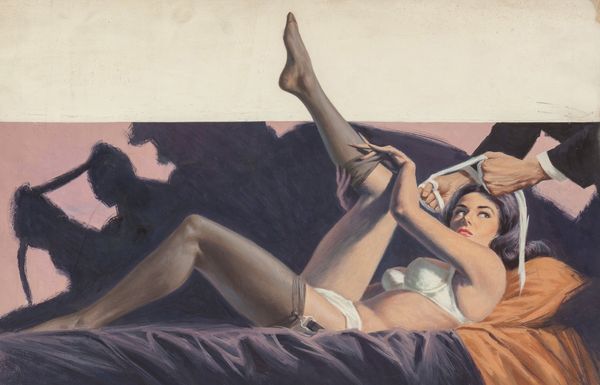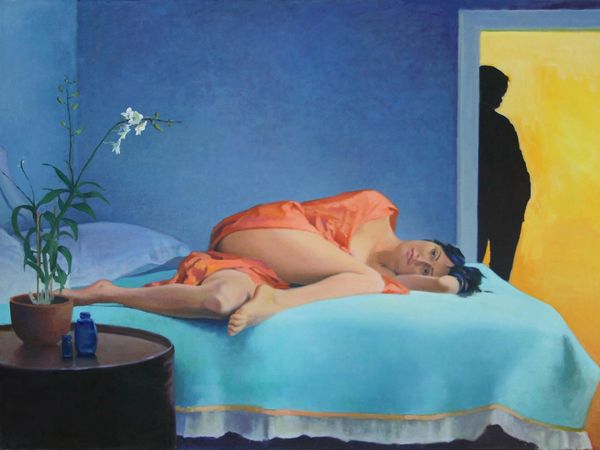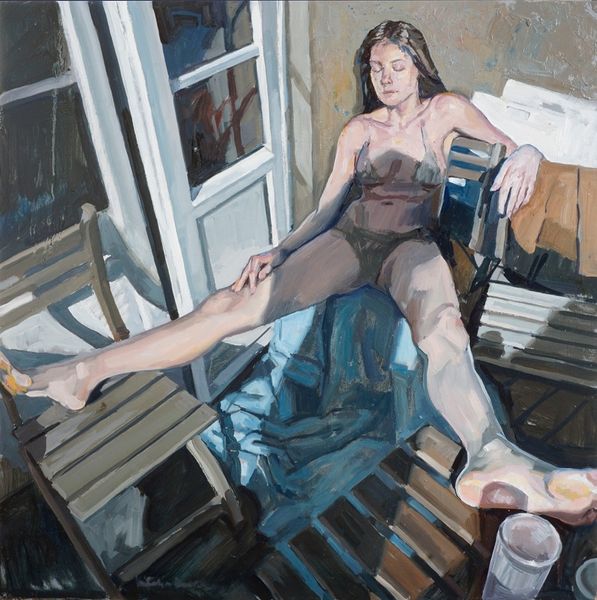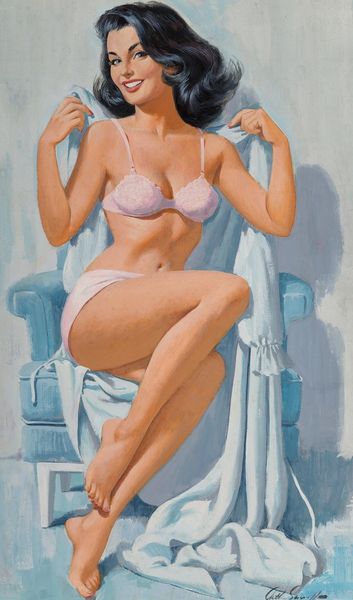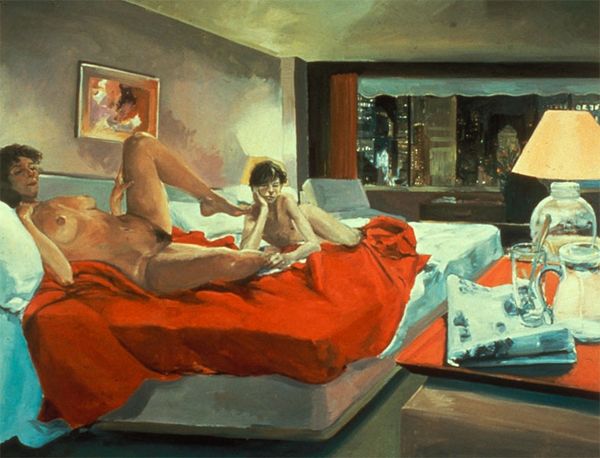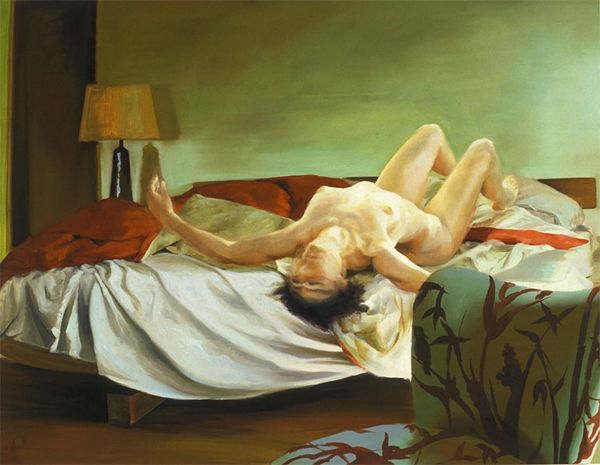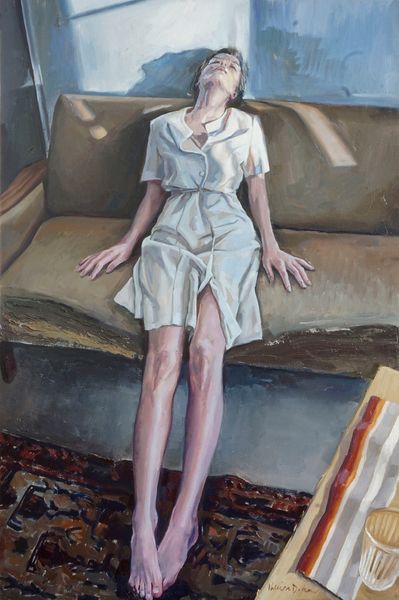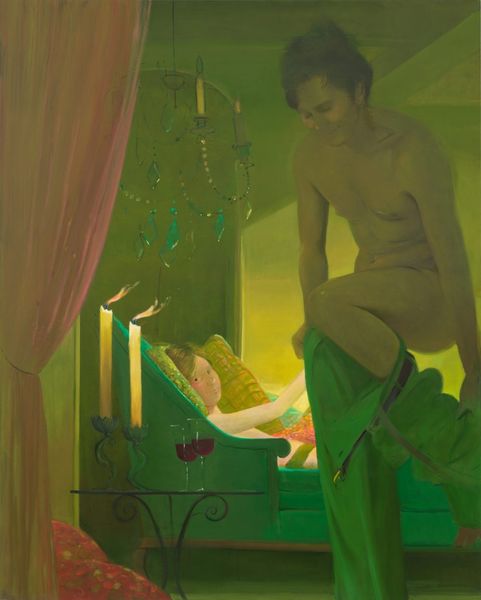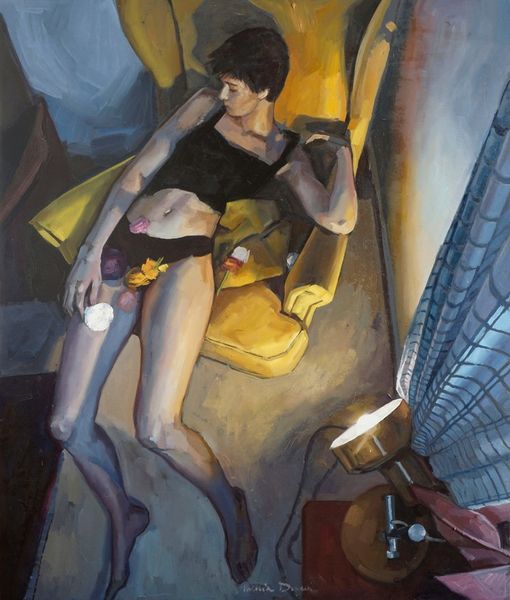
painting, oil-paint
#
portrait
#
contemporary
#
painting
#
oil-paint
#
figuration
#
genre-painting
#
realism
Copyright: Eric Fischl,Fair Use
Curator: This is Eric Fischl's "Krefeld Project Bedroom Scene 1," painted in 2002 using oil paints. The piece captures a peculiar bedroom setting. What is your first reaction to it? Editor: There’s an unsettling stillness. The light is odd—almost harsh—and it highlights the very tangible texture of the oil paint. I'm immediately drawn to how the artist represents human skin. Curator: Fischl, known for his figurative work, often explores themes of sexuality, suburban life, and unease, especially focusing on the body within the domestic space. In terms of gender politics, this bedroom seems charged with unspoken dynamics. Editor: Absolutely. You can almost feel the artist relishing in the paint, the visible strokes building the forms of the bodies and the simple hospital bed. It challenges that polished, almost sterile ideal that’s often present in commercial art. It foregrounds the physical effort behind image-making. The choice to show, almost to celebrate, materiality interests me the most. Curator: Fischl’s style pulls from realism, but it’s disrupted—heightened to portray narrative ambiguity. It feels like he is pointing to moments of shifting power, especially by isolating figures within these highly staged, deliberately designed environments. Notice the setting; we see the legs of what may be another person. Perhaps another patient. And there is someone at the edge of the painting who seems to be an audience member observing these scenes. How do you read those components within this context? Editor: I’m focused on the stripes of light, cutting across the lower body, as a kind of crude pattern imposed on vulnerable flesh. He's very deliberately presenting this scene—manipulating perspective, light, and even who gets to be present in the frame. What this scene tells us is very elusive. What happens, in these circumstances, to ideas around care, domesticity, intimacy and bodies when exposed this way? Curator: It leaves us pondering how power and visibility shape our understanding of the domestic, turning a seemingly private space into a stage for deeper socio-political inquiry. Editor: Indeed. By showing us the 'how' of its creation—the paint, the brushstrokes, and the human touch—Fischl invites us to examine not just the subject, but also the act of viewing, of manufacturing the meaning of experience.
Comments
No comments
Be the first to comment and join the conversation on the ultimate creative platform.
